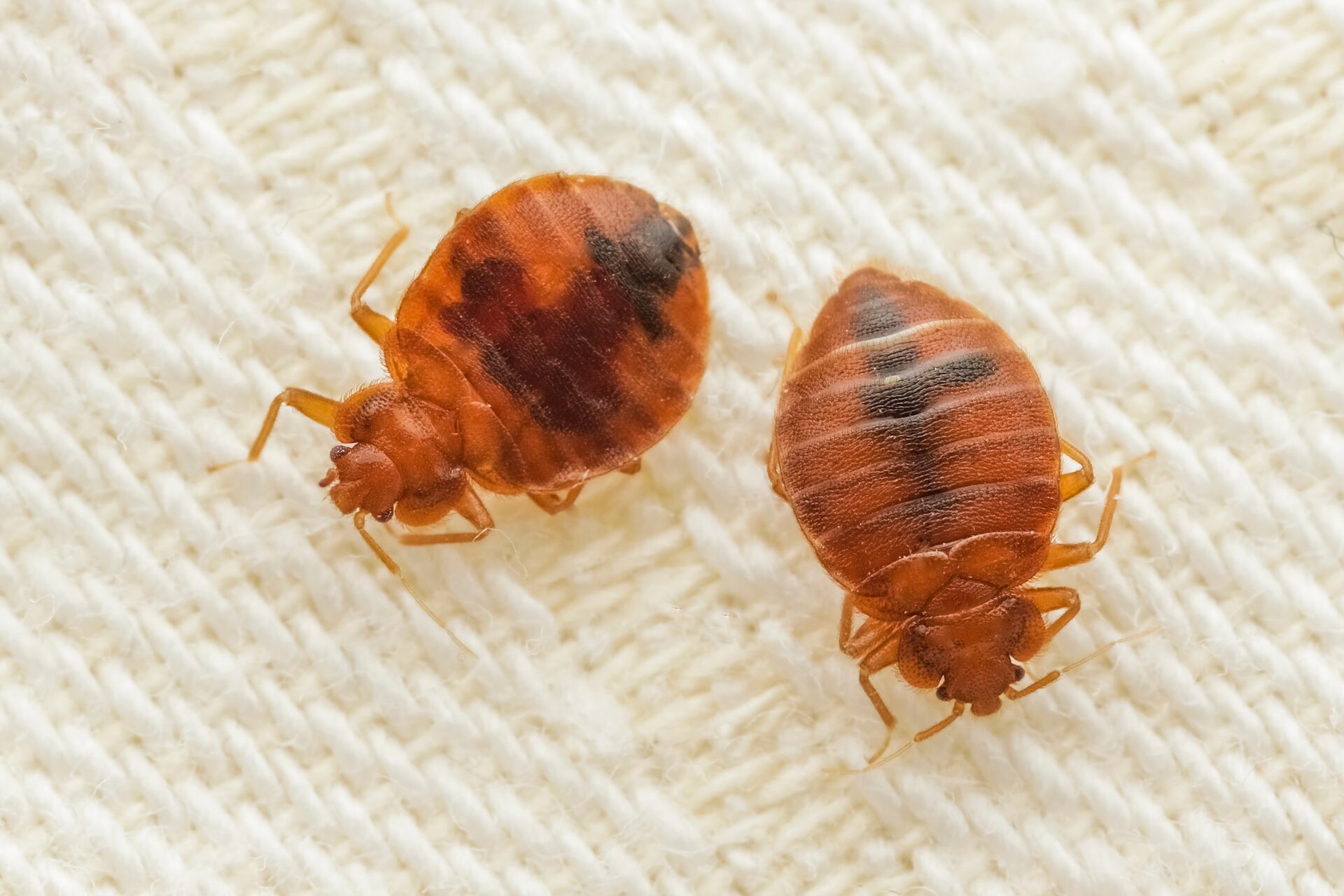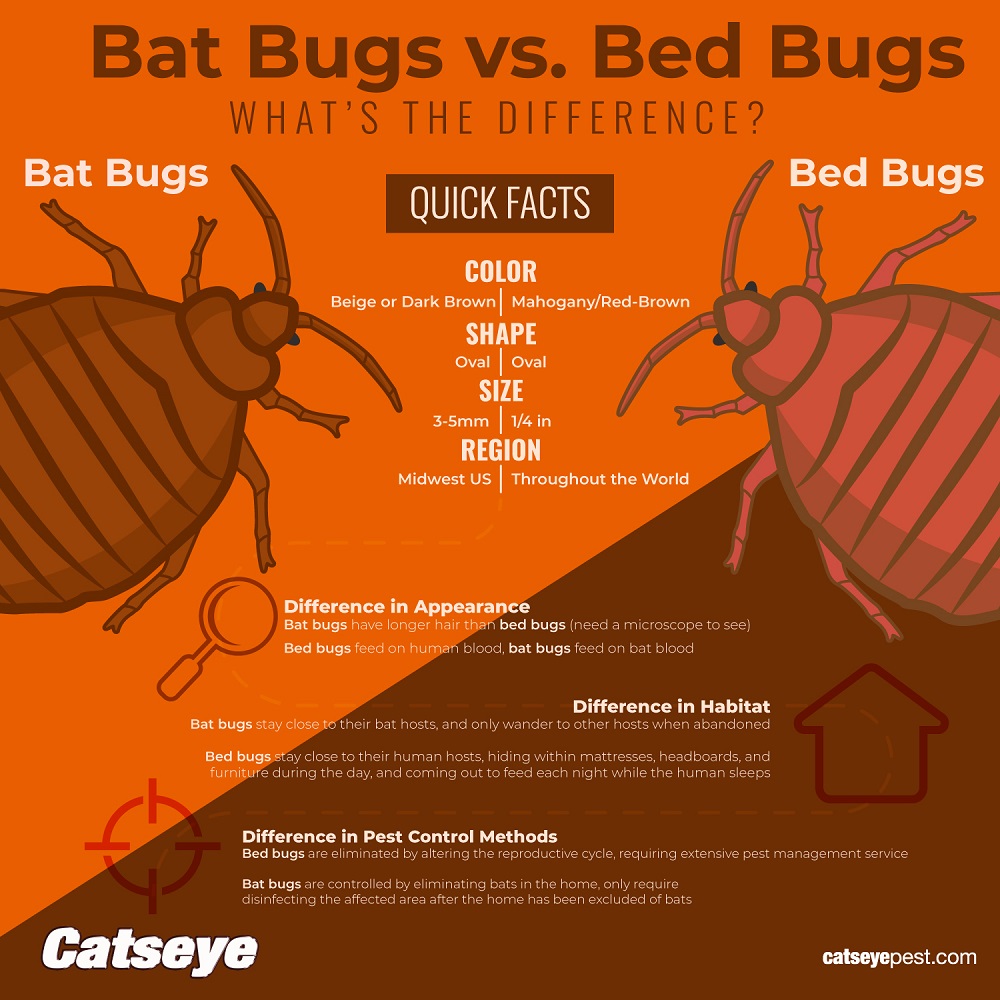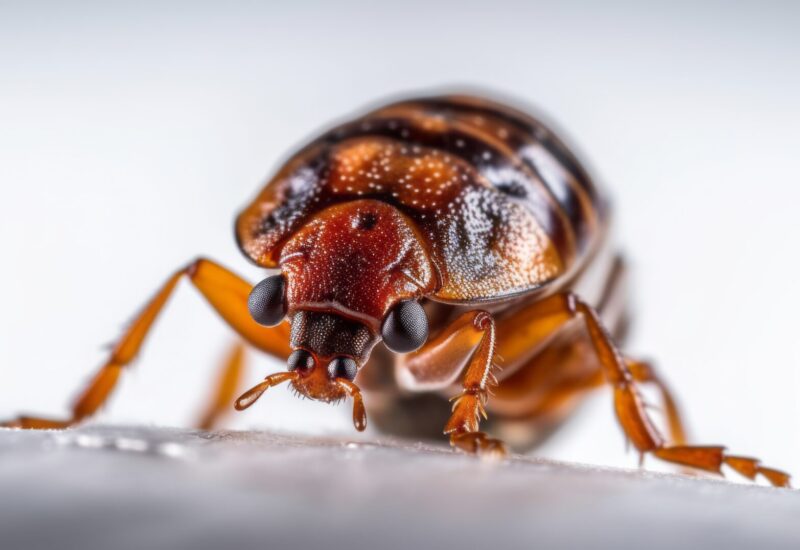Bat Bugs vs. Bed Bugs: What’s the Difference?

Learn the Difference Between Bat Bugs & Bed Bugs
Once close to extermination after World War II, bed bugs are alive and resurging at an increasing rate across the country. Extremely irritating and downright gross, the bloodsuckers are the last thing you want to invite into your home.
Most people assume any bug on their mattress is a bed bug, but could it be something else? There are other pests commonly mistaken for bed bugs, and knowing the difference could change the way you go about removing them.
Most commonly mistaken for a bed bug is the bat bug. These fellow blood suckers are relatives of the bed bug; however, they prefer to snack on the blood of bats. Meaning, if you are finding bat bugs in your house, it’s probably because you have a bigger pest problem – bats.

What Do Bat Bugs Look Like?
Bat Bugs have small oval bodies that are flattish, so they can easily hide in cracks and crevices. These insects are transparent tan or beige in color, but will quickly turn dark brown after a blood meal. Their mouthparts look like a beak, and are made for sucking and piercing.
These insects usually choose Big and Little Brown Bats for their hosts. The Bat Bugs will cling to the bat’s fur and travel back to the roost. Between meals, Bat Bugs will hide in cracks near where the bats sleep, like how Bed Bugs hide along mattress seams near their human hosts.
The differences between bat bugs and bed bugs are subtle and more often than not, only a trained professional would be able to tell the difference. Bat bugs and bed bugs look almost identical in body shape and color. The most useful identifying feature is their hair; a bat bug has longer hairs on their upper thorax than those of a bed bug. It is very difficult, if not impossible, to see this difference without the use of a microscope.
Where Do Bat Bugs Live?
Another key difference of bat bugs and bed bugs is where they live.
Most bed bugs are found within a few feet of their feeding host, which includes mattresses, headboards, baseboards, couches, and other frequently used pieces of furniture. It is possible for bat bugs to be seen in a few of these places as well but, they are mainly found in areas that harbor bats, such as attics.
Bat bugs may be present on ceilings and on the walls but usually stay within the immediate vicinity of their food source. The primary hosts of bat bugs are a variety of bat species, most commonly the big brown bat and little brown bats. Bat bugs are often found inside a structure when bats have established a colony in attics, wall voids, unused chimneys, or any uninhabited areas within a building. Typically, bat bugs will be found in cracks and crevices in bat roosting areas.
Difference Between Bat Bug & Bed Bug
-
Difference in Appearance:
-
Bed bugs have longer hair than bat bugs (need a microscope to see)
-
Bed bugs feed on human blood, bat bugs feed on bat blood
-
-
Difference in Habitat:
-
Bat bugs stay close to their bat hosts and only wander to other hosts when abandoned
-
Bed bugs stay close to their human hosts, hiding within mattresses, headboards, and furniture during the day, and coming out to feed each night while the human sleeps
-
-
Difference in Pest Control Methods
-
Bed bugs are eliminated by altering the reproductive cycle, requiring extensive pest management service
-
Bat bugs are controlled by eliminating bats in the home, only require disinfecting the affected area after the home has been excluded of bats
-
Bat Bug Bites
Bats that decide to make your attic their home may bring bat bugs with them. So, if these bugs are just bothering bats then what’s the big deal?
These pests could wander and find a human to feed on, but often do not become a problem until after the bats have been removed. At that point, humans are the only available food source. If bitten, bat bug bites leave tiny welts that can be very itchy, just like a bed bug bite.
Bat Bugs Pest Management
It is important to understand the difference between these two bloodsuckers because, while they look the same, there’s a big difference when it comes to controlling these pests.
Catseye offers a bed bug elimination service referred to as the “Cryonite Method.”
The Cryonite Method uses the cooling properties of carbon dioxide to eliminate bed bugs and their eggs, disrupting their lifecycle. Other options for treatment of bed bugs include extreme heat and fumigation. The pest professionals at Catseye use Cryonite because it is more environmentally-friendly, can better reach the tiny cracks where bed bugs like to hide and can be used to target very specific areas in your home.
Bat bugs, on the other hand, have a more direct solution. Since bat bugs require bat blood to reproduce, evicting the bats in your home is the most effective treatment. Removing the bats, as well as sealing any exterior entry points will prevent any future infestations.
The next time you discover what you think is a bed bug or a bat bug, contact us for a free home inspection and let us investigate for you.






